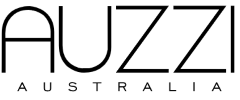8 Things to Check Before Buying a Used Car

So you’re looking for the first car for your kid or a second car for your family daily trips and chores? It makes perfect sense that you’re not willing to invest in something new and overly pricey. However, even when shopping for a used car, you still don’t want to buy a lemon and end up feeling sour. A used car can be more than reliable, especially if you inspect it well before you decide to show your wallet. Here’s a little guide for used car inspection:
Check the legality
When you find a car you’re interested in, make sure everything is legal and there are no debts on it. Car dealerships are legally obliged to offer only debt-free cars, but if you’re opting for a private sale, make sure to do your own research. If you’re buying locally, you can check the national Personal Property Securities Register of Australia that also contains the Register of Encumbered Vehicles (make sure to have the vehicle ID number or chassis number at hand). A comprehensive history of the vehicle costs about $30 but it’s more than worth it.
Ask questions
Try to learn as much as you can about the vehicle’s history. Check how many hands it has been through, were there any accidents in the past, what’s the mileage and how much it costs to top off the tank, is the vehicle insured and registered, what safety features it has, and so on.
Check out the body and the frame
When looking at the car, watch out for rusty spots and paint chips. If there are places with rusty metal, it’s best to keep searching for a more ideal vehicle, but tiny scratches and rust dots are easy to fix, so they don’t have to be a deal-breaker. Pay attention to whether the car is levelled on the ground and look at the bumpers. Also, if you see any new bolds or warping on the frame, it might be a telltale sign of a recent accident.
Look closely at the tyres
All the tyres should match and be worn out evenly. If the tread is uneven, it often means there are issues with tyre alignment, steering, suspension or frame issues. If you really like the car, take it to your local car service in Sydney or your closest urban centre to book professional wheel inspection and alignment. You don’t want your future car to pull to the left or right as you drive it.
Peek under the hood
The engine is the heart of the car, so make sure to pop the hood and see what’s up. If you’re not an expert, you can’t see much, but things like leaks, corrosion and cracks on belts and hoses can be noticed even by an untrained eye. When checking the oil, look for discoloration—the oil should be light brown, while transmission fluid should be pinkish or red, it’s one of the hacks everyone should know.
Check under the car
A “healthy” car should not show signs of leaks. Check under the car for puddles or drops on the surface below it. Even if there’s a lot of sludge on the underside of the engine, it might be a sign of an existing or patched-up leak. Also, poop the bonnet and inspect the engine for leaks.
Inspect the interior
If you’re suspicious about the mileage, the interior of the car will clear all the doubts. If there are only 30,000 km on the clock, the interior should be in a near-mint condition. However, if the steering wheel, seats and armrests look worn out, something doesn’t add up. Also, check for the holes in the upholstery or drilling in the dashboard. A smoker’s car might hide some burns as well. If these don’t interest you, it’s your call, but it’s possible to use these flaws as leverage when haggling.
More importantly, while you’re inside, check the equipment. Inspect everything from lights to air conditioning, as well as all the electronics. One of the favourite things to do for many car owners is blasting the radio while they drive, so check the radio. Press the buttons and see whether all the electronic components are working. Pay special attention to air conditioning, because it costs a lot of money to fix and you basically can’t live without it in Australia.
Take it for a spin
Last, but definitely not least, is the test drive—maybe the most important part of shopping for a used car. Choose a good route with curves and inclines so you can test the car’s manoeuvrability, braking, acceleration and suspension. If you can, go on a short highway drive and try parking it to see how big the blind spots are.
If you invest time into inspecting all the points mentioned above, you will end up with a good used car for your money and get many, many safe and comfortable kilometres out of it.

